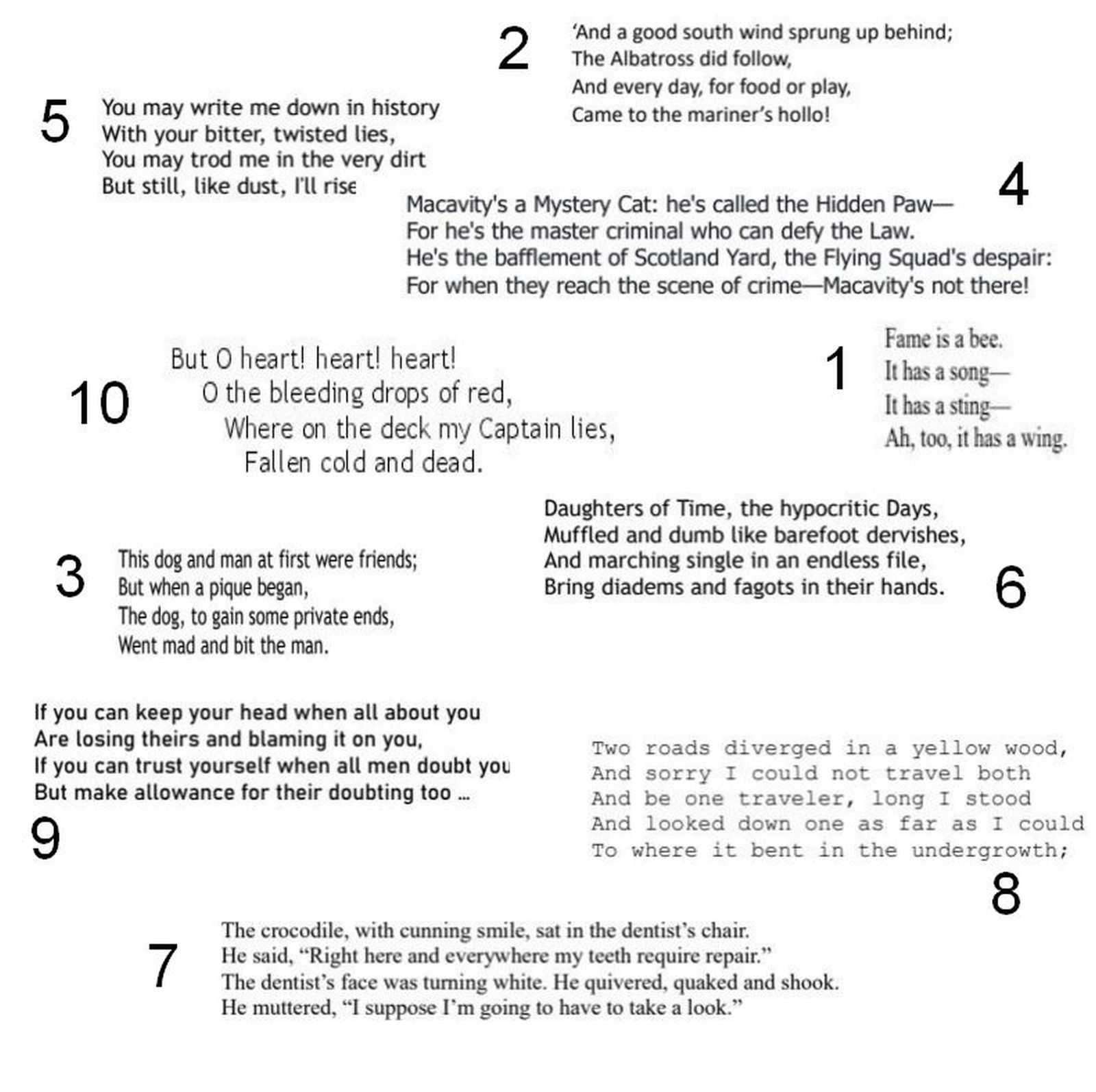
Poetic Lines and Other Works Trivia Quiz
The image shows lines from poems by ten poets. The answers are titles of different poems by the same ten poets. Match the answer to the lines from the same poet in the image by placing it against the right number.
A label quiz
by suomy.
Estimated time: 3 mins.
- Home
- »
- Quizzes
- »
- Literature Trivia
- »
- Poetry
- »
- Poetic Quotes
